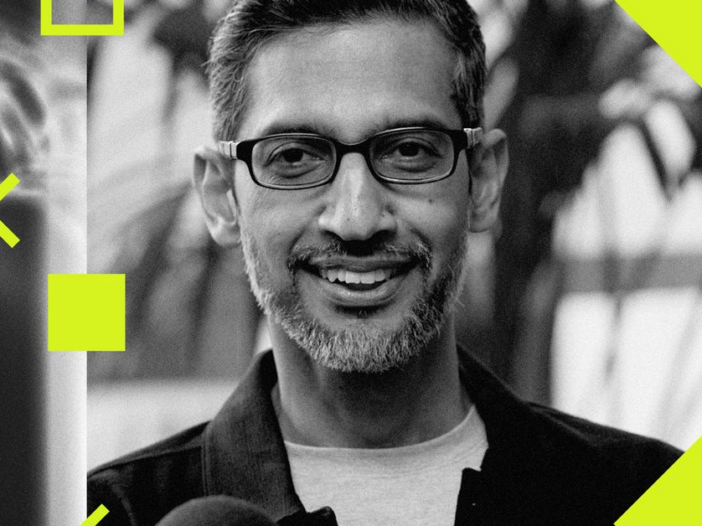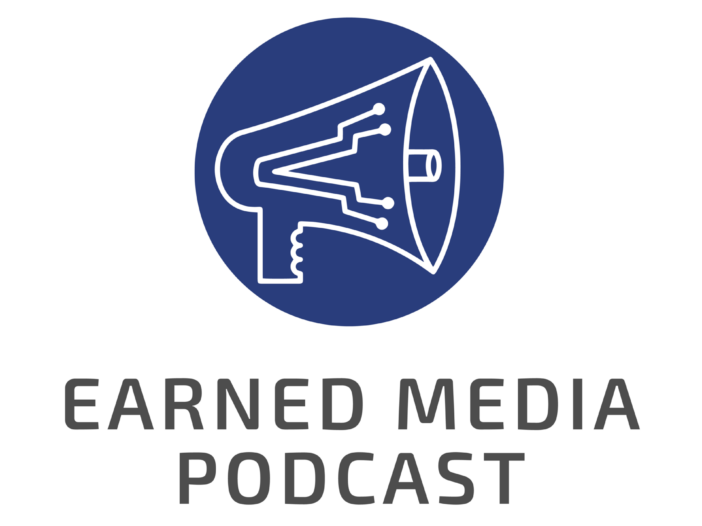As entrepreneurs, we are constantly trying to acquire new skills and knowledge to survive and thrive in the competitive business landscape. While reading an insightful business book is almost always the best way to gain knowledge and wisdom, not everyone can find time in their busy schedule to read books.
So what should a busy entrepreneur do?
The answer is simple: listen to podcasts!
You can tune into podcasts anytime you want — while commuting to work, jogging, cooking, cycling, or even while working out at the gym.
Podcasts are immensely popular these days. According to Convince and Convert, podcast listeners listen to an average of 8 podcasts per week.
There are podcasts covering almost any topic you can imagine. Entrepreneurship is no different. There are a ton of business podcasts, where successful entrepreneurs and business leaders share their expertise, insights, experiences, and strategies that can be immensely helpful in your own entrepreneurial journey.
To that end, I’ve compiled a list of podcasts that will make you a better entrepreneur.
Here are the 20 best entrepreneur podcasts to help you get started.
Table of Contents
Rework is a podcast by Jason Fried and David Heinemeier Hansson, the co-founders of 37signals and authors of one of my favorite business books, “Rework.” It’s a perfect companion to the book, expanding on their unconventional business philosophy and offering a behind-the-scenes look at their journey with 37signals.
The podcast dives into startup stories and lessons learned, showing you why bootstrapping, staying small, and growing slow can be just as rewarding as scaling quickly.
If you prefer a more organic approach to entrepreneurship, then Rework is among the best entrepreneur podcasts you can listen to.
Listen on: Apple Podcasts | Spotify
Recommended reading: 7 Business Lessons from “Rework” by Jason Fried & David Heinemeier Hansson
Pivot is a weekly podcast produced by Vox Media and New York Magazine, featuring hosts Kara Swisher, one of Silicon Valley’s most respected journalists, and NYU Professor Scott Galloway.
This show combines sharp insights with lively banter, as Swisher and Galloway share their takes on technology, business, politics, and culture.
Whether they’re analyzing the latest tech trends or debating the implications of recent business developments, their engaging back-and-forth makes Pivot both informative and entertaining.
Listen on: Apple Podcasts | Spotify
Naval Ravikant is a serial entrepreneur and one of the most well-known venture capitalists in the world. Naval’s unique perspective on life, happiness, and success has set him apart from other tech entrepreneurs and he has amassed quite a following on Twitter because of this quality.
Naval explained this dichotomy on the Joe Rogan podcast by saying, “The reason why people like hearing me is because it’s like if you go to a circus and you see a bear, that’s kind of interesting but not that much. If you see a unicycle, that’s interesting. But you see a bear on a unicycle, that’s really interesting. So, when you combine things you’re not supposed to combine, people get interested.”
Naval has been sharing his unique philosophy on business, wealth, and happiness on Twitter, his blog, and his podcast over the last few years and has built quite a reputation for his reflections. While you can always tune in to Naval’s several podcast interviews on shows like The Tim Ferriss Show and The Joe Rogan Podcast, Naval’s podcast is the best place to get a peek into Naval’s thought process and mental models.
Naval’s “How to Get Rich” podcast episode contains a treasure trove of tips for entrepreneurs on how they can maximize their leverage, acquire specialized knowledge, and build wealth. The podcast contains two long-form episodes (over 2 hours), while most of the other episodes are bite-sized snippets on a broad range of topics.
If you find Naval’s philosophy interesting, I’d highly recommend you read Eric Jorgensson’s The Almanack of Naval Ravikant, a compilation of Naval’s best thoughts and reflections on wealth, happiness, and life. You can read the entirety of the book online for free at navalmanack.com.
Listen on: Apple Podcasts | Spotify
Recommended reading: 50 Best Naval Ravikant Quotes to Inspire You
Tim Ferriss is a serial entrepreneur and best-selling author known for profoundly influential business books like “The 4-Hour Workweek,” “Tribe of Mentors,” and “Tools of Titans.” His work has transformed the way people think about productivity, entrepreneurship, and personal development, offering actionable strategies for achieving more with less effort.
Tim’s podcast, The Tim Ferriss Show, frequently tops the charts as the #1 business podcast on Apple Podcasts. It has also secured the top spot out of more than 500,000 podcasts on numerous occasions.
The podcast features interviews of successful people from all areas of life (investing, sports, business, art, etc.) as Tim examines the tactics, tools, and routines they typically use to achieve peak performance.
Past guests on the show have included Arnold Schwarzenegger, LeBron James, Doris Kearns Goodwin, Malcolm Gladwell, Vince Vaughn, Susan Cain, Ramit Sethi, and many more.
Listen on: Apple Podcasts | Spotify
The Wondery podcast network has several podcasts that entrepreneurs will find useful and entertaining. But my pick for the best business podcast series from the network is Business Wars.
Hosted by veteran radio journalist David Brown, Business Wars explores some of the most intense corporate rivalries and how the leaders and investors involved in competing companies drove their companies to new heights or financial ruin.
From covering classic brand rivalries like Coke vs Pepsi and iPhone vs BlackBerry to more recent rivalries like Marvel vs DC and Red Bull vs Monster, David Brown’s impeccable storytelling skills will keep you hooked and wanting more. That said, it’s not just the entertainment factor that makes this such a compelling podcast. You’ll also find a ton of lessons and cautionary tales along the way.
The podcast gives a multi-episode treatment to each brand rivalry, while each episode is around 30 minutes long. My personal favorite is the 8-part Netflix vs BlockBuster series.
If you enjoy learning about corporate rivalries as much as I do, you’re going to love this podcast.
Listen on: Apple Podcasts | Spotify | Website
Chris Guillebeau is the author of The $100 Startup, a New York Times bestseller that has sold over 500,000 copies worldwide. In his most recent book, Side Hustle, Guillebeau explains how anyone can create a new source of income in 27 days. He explores the subject in greater depth in his podcast, Side Hustle School.
The purpose of Guillebeau’s podcast is to help you create a new source of income without quitting your job.
In each episode, you’ll hear a different story of someone who’s started a side hustle — along with what went well, how that person overcame challenges, and what happened as a result.
Listen on: Apple Podcasts | Google Podcasts | Spotify
Gary Vaynerchuk is a serial entrepreneur and chairman & CEO of VaynerMedia, a full-service advertising agency servicing Fortune 100 clients. Gary Vee has an active presence on social media, including Instagram, Twitter, Snapchat, and YouTube, where he has his Q&A show #AskGaryVee and the daily video documentary series DAILYVEE.
In his podcast, The GaryVee Audio Experience, you’ll find a mix of #AskGaryVee show episodes, keynote speeches on marketing and business, segments from his DAILYVEE video series, interviews, and fireside chats, as well as original content recorded specifically for the podcast.
Listen on: Apple Podcasts | Spotify
Entrepreneurs on Fire is an award-winning business podcast by John Lee Dumas, where he interviews successful entrepreneurs to inspire you in your entrepreneurial journey.
The goal of this podcast is to present you with the inspiration and strategies you need to fire up your entrepreneurial journey and create the life you’ve always dreamed of.
Since launching his podcast on September 22nd, 2012, Dumas has interviewed over 2,000 entrepreneurs, including Seth Godin, Gary Vaynerchuk, Barbara Corcoran, Tim Ferriss, Neil Patel, and many more.
Listen on: Apple Podcasts | Spotify
Hosted by Laura Shin, Unchained is one of the best cryptocurrency podcasts on the web. Shin was the first mainstream media journalist to cover cryptocurrency and blockchain full-time at Forbes. Most recently, she authored the book The Cryptopians, which explores the origin stories of Ethereum.
If you’re a crypto entrepreneur, then you should definitely tune in to this podcast as it delivers the most up-to-date information on the top crypto stories of the day. In addition to covering breaking news stories in the cryptosphere, the show also features interviews with thought leaders, leading experts, and influencers from the industry.
Past guests on the show have included the likes of Ethereum creator Vitalik Buterin, Binance CEO Changpeng Zhao (CZ), prominent Canadian VC Chamath Palihapitiya, and several other blockchain innovators and investors. If you’re a crypto beginner, then their episode on “How to explain cryptocurrency to the average person” is highly recommended.
Listen on: Apple Podcasts | Spotify | Website | YouTube
Hosted by the Webby award-winning host Lindsay Graham, Business Movers is a weekly podcast that explores the true stories of innovative entrepreneurs, creators, and businesses. It examines their strengths, flaws, and the incredible risks they took to reach new heights.
From unravelling Coca-Cola’s biggest mistake to exploring the secrets of Warren Buffet’s business success, Business Movers examines the triumphs, failures, and ideas that transformed our lives. My personal favorite is the 5-part George Lucas series, which explains how Lucas defied the odds and risked it all to make Star Wars.
Listen on: Apple Podcasts | Spotify | Website
WeCrashed is a limited podcast series that covers the rise and fall of WeWork and its eccentric founder Adam Neumann. If you don’t know about the whole WeWork IPO fiasco and the company’s subsequent fall from grace, this podcast should definitely be on your radar. It tells you exactly what was happening behind the scenes at a company that was once valued at $47 billion dollars and highlights the pivotal reasons behind the company’s downfall.
This 6-part series is hosted by podcast veteran David Brown, who also hosts Business Wars (see #5). The podcast was later adapted into an Apple TV+ limited series of the same name, starring Jared Leto as Adam Neumann and Anne Hathaway as Rebecca Neumann. The show is a good adaptation of the podcast and it’s one of the must-watch series for entrepreneurs.
Both the podcast and the accompanying TV series are worth your time if you’d like a sneak peak at all the insanity that preceded WeWork’s disastrous IPO.
Side note: To learn more about WeWork’s rise and fall, and Adam Neumann’s eccentricity and narcissism, I’d recommend Reeves Wiedeman’s book Billion Dollar Loser.
Listen on: Apple Podcasts | Spotify | Website
Aside from co-hosting the Pivot podcast with Scott Galloway (see #2), award-winning journalist Kara Swisher has her own podcast called On with Kara Swisher.
The podcast features candid interviews with an impressive array of guests, including tech execs, entrepreneurs, politicians, celebrities, and more. New episodes are released every Monday and Thursday.
One reason this podcast is an excellent choice for entrepreneurs is Swisher’s ability to dive deep into the minds of her guests, revealing their thought processes, experiences, and lessons learned.
Past guests on the podcast have included Reddit CEO Steve Huffman, Airbnb co-founder Brian Chesky, Hilary Clinton, bestselling author Adan Grant, and many more.
Listen on: Apple Podcasts | Spotify | Website
Masters of Scale is a business podcast hosted by Reid Hoffman, co-founder of LinkedIn, where he invites successful entrepreneurs to share the stories and strategies that helped them grow from startups into global brands.
Reid and his guests talk entrepreneurship, leadership, strategy, management, and fundraising. But they also talk about the human journey — with all its failures and setbacks.
Past guests on the podcast have included Arianna Huffington, Ben Chestnut, Kevin Systrom, and many more.
Listen on: Apple Podcasts | Spotify
With over 3 million subscribers, Morning Brew is one of the leading business newsletters on the internet. Founder’s Journal is a podcast hosted by Morning Brew co-founder Alex Lieberman.
Lieberman approaches his podcast like his personal audio diary where he shares the tools you need to think better and build better products. You’ll also find a ton of productivity hacks on his podcast. For example, in episode #298, Lieberman reveals his favorite productivity method and entrepreneurs from all walks of life can take valuable insights from it.
Listen on: Apple Podcasts | Spotify | Website
Thrifty Titans, hosted by marketer-creator-media nerd Saikat Pyne, has been ranked as India’s #1 Marketing Podcast, and among India’s Top 20 Business Podcasts by Apple Podcasts. Tune in to learn business and audience growth insights and hacks that you can implement without losing your mind or breaking the bank.
Past guests on the show include Neil Patel (New York Times bestselling author and Founder at NP Digital), Bharati Balakrishnan (Country Head and Director – India and SEA at Shopify), RS Raghavan (Founder & CEO – Animaker), Tusharr Kumar (COO – Only Much Louder), Advait Gupt (Co-founder & CEO at Kulfi Collective) among other top global media founders, business leaders, influencers, and content creators.
Listen on: Apple Podcasts
StartUp is a podcast from Gimlet Media hosted by Alex Blumberg and Lisa Chow. The podcast is all about what it’s really like to start a business.
The first two seasons of the show followed stories of starting businesses. Season 1 was about the starting of Gimlet Media itself, and season 2 dealt with the starting of a dating company called “Dating Ring.” The third season follows one business per episode.
Listen on: Website | Spotify
Smart Passive Income is a top-ranking and award-winning business podcast hosted by Pat Flynn, a blogger and entrepreneur known for his immensely successful blog, The Smart Passive Income, where he teaches his followers about investing in online businesses and generating passive income.
In his podcast, Pat Flynn reveals all of his online business and blogging strategies, income sources, and killer marketing tips and tricks so you can be ahead of the curve with your online business or blog. The podcast covers a broad range of business topics such as automation, crowdsourcing, SEO, affiliate marketing, outsourcing, and more.
Since launching his podcast in 2010, Flynn has invited several entrepreneurs, authors, and business leaders to share their secrets of success. Past guests have included Gary Vaynerchuk, Nir Eyal, James Clear, Ramit Sethi, and many more.
Listen on: Apple Podcasts | Spotify
Hosted by Stig Brodersen and Trey Lockerbie, this podcast interviews and studies famous financial billionaires. From Warren Buffet to Jeff Bezos to Howard Marks, We Study Billionaires teaches you how to apply the billionaires’ investment strategies in the stock market.
This podcast was launched in 2014, so there are a lot of episodes to skim through. I’d personally recommend you start with the very first episode of the podcast which examines Warren Buffet’s business philosophy and investment strategies.
Listen on: Apple Podcasts | Spotify | Website
The Dropout is a limited podcast series that tells the story of the rise and fall of Elizabeth Holmes and her revolutionary blood-testing company, Theranos.
Once touted as the “next Steve Jobs,” Holmes’ net worth was valued at $4.5 billion while her company’s valuation was $9 billion. It all came crashing down when it was later revealed that her blood-testing technology didn’t work and that she had been deceiving investors and using intimidation tactics to silence her employees.
All this and more is covered on the podcast, which features exclusive interviews with former Theranos employees, investors, and patients. The podcast also covers Elizabeth Holmes’ trial and final sentencing in detail. The podcast was later adapted into a Hulu limited TV series of the same name which is definitely worth a watch. It features a great ensemble cast and Amanda Seyfried nails her role as Elizabeth Holmes.
To learn more about the Theranos scandal, I’d highly recommend you check out John Carreyrou’s brilliant book Bad Blood. Carreyrou was the first reporter to investigate Theranos and played a significant role in its downfall.
Listen on: Apple Podcasts | Spotify
Last but not least, I’m including my own podcast on this list — Marketing Mantra. I launched this podcast with the help of Spotify for Podcasters (formerly Anchor) back in August 2018, with an aim to share actionable marketing strategies and tactics that have worked for me at my blog and my digital marketing agency.
From time to time, I also invite other bloggers and entrepreneurs to share their success stories and business tactics. Past guests on the podcast have included Matthew Woodward, Daniel Daines-Hutt from AmpMyContent, Alexandra Tachalova from Digital Olympus, Vlad Calus from Planable, and many more.
If you’ve liked any of my content in the past, I’d request you to please subscribe to Marketing Mantra on your preferred podcast player.
Listen on: Apple Podcasts | Spotify
The 20 podcasts featured above are my personal favorites, but the entrepreneur podcasts below are also highly recommended:
So there you have it — the 20 podcasts that will make you a better entrepreneur. You can also check out this list of 38 marketing podcasts if you’d like to get your fill of the latest marketing trends, insights, and tips.
Looking for more business podcast recommendations? Check out these other lists from my blog:
Did I miss out on any of your favorite entrepreneur podcasts? Let me know in the comments section below. I’d love to hear your recommendations.
If you liked this article, please share it on Twitter using the link below:
Editor’s Note: This article was first published on 20 September 2019 and has been updated regularly since then for relevance and comprehensiveness.
Related Articles
Sandeep As a an avid listeners to podcasts and a fellow podcasters, I am glad to see your compilation. Have you listened to Brent Leary’s podcast on Small Business Trends?
I would add marketing in the car by Russell Brunson, smart marketer, great content.
Thanks for the recommendation, Seki. Will definitely check it out.
[…] of topics — including business. If you’re looking to improve your skills as an entrepreneur, check out this 99signals post by Sandeep Mallya for a selection to add to your list. Then see what members of […]
I use great lists like this all of the time for deciding which podcasts to listen to.
Please consider as well these fast risers…
Two Are Gathered Leadership Podcast (dealing with the heart issues of entrepreneurs)
Global Studio Marketing Podcast (teaching entrepreneurs how to THINK like seasoned marketing pros)
3 podcasts that will make you a better entrepreneur:
1) The Pitch – this is Seth Mclaughlin’s podcast. It airs every Saturday on NPR and talks about the life of entrepreneurs.
2) Planet Money – more or less, it discusses economics and how these relationships manifest themselves in our society. This is not to be missed for anyone wanting to learn more about money in general.
3) Freakonomics Radio – you have probably heard Jonathan Levitt interviewed on many networks, but his podcast talks about different things that he has learned, primarily through studies as opposed to an interview.
We started our business listening to Tim Ferris show and now we are doing amazingly well. You just need to gather the right skills, bring the right confidence, and move forward.
Awesome list! Especially The Dropout, I still can’t believe what Holmes pulled off. I also suggest the book Bad Blood — it reads like a thriller! On the podcast side, I would suggest Road to CEO — the guests are real folk from various backgrounds and they share pretty amazing stories. So, if anybody is on the lookout for a more underground podcast gem, this is the one.
Hi there, I’m Sandeep Mallya!
I’m an entrepreneur and digital marketing consultant from Bangalore, India. I founded my own digital agency, Startup Cafe Digital, in 2015 to help SMBs leverage SEO, social media, and content marketing to grow their traffic and generate qualified leads for their business.
I launched 99signals in 2016 as a side project to document all the strategies, tools, and tactics that I was using to grow my small agency. The goal was simple: to arm other entrepreneurs and bloggers with all the right information and tools they needed to launch a successful online business.
Since then, 99signals has grown significantly and generates over $10,000 in side income each month. Read More about “About Sandeep Mallya”…
Hi there, I’m Sandeep Mallya!
I’m an entrepreneur and digital marketing consultant from Bangalore, India. I founded my own digital agency, Startup Cafe Digital, in 2015 to help SMBs leverage SEO, social media, and content marketing to grow their traffic and generate qualified leads for their business.
I launched 99signals in 2016 as a side project to document all the strategies, tools, and tactics that I was using to grow my small agency. The goal was simple: to arm other entrepreneurs and bloggers with all the right information and tools they needed to launch a successful online business.
Since then, 99signals has grown significantly and generates over $10,000 in side income each month. Read More about “About Sandeep Mallya”…
A few links on this blog are affiliate links. If you purchase a product or service through one of these affiliate links, I’ll receive a commission at no additional cost to you.
Rest assured, I recommend only those tools that I personally use and genuinely trust. In most cases, you’ll find in-depth reviews, tutorials, and how-to guides of these tools on my blog to help you make informed decisions.


















